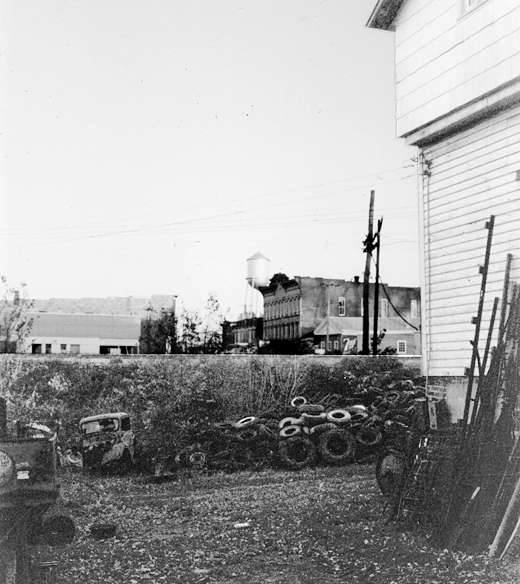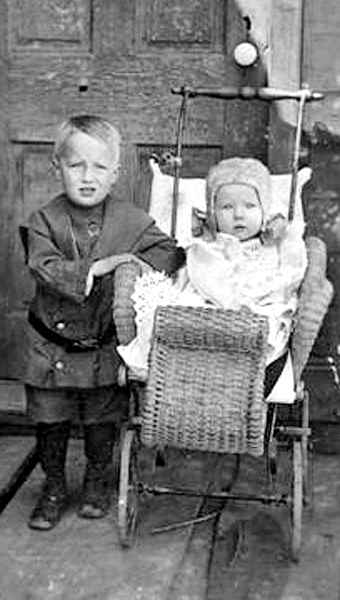|
CARDINGTON'S TORNADO IN 1981
June 11, 1981
Seven tornadoes struck Ohio, in Cardington Ohio in Morrow County 4 people were killed.
June 13, 1981: A tornado traveled through the center of Cardington (Morrow County), damaging the entire 9-block business district. About 100 homes were also destroyed or heavily damaged. Four people were killed and several others injured.
Sunday, 14 June 1981
National Guard called in after tornado destroys Cardington, OH; search for victims continues; Ohio governor asks for federal disaster relief.
Cardington, Ohio founded in 1836, gained national publicity as a result of severe tornado damage in June of 1981. Due to the extensive damage done, a substantial portion of the village will have to be rebuilt.
After a tornado destroyed more than 800 trees in Cardington, Ohio, citizens organized a tree restoration committee which solicited donations and memorials. Volunteers who learned of the tree planting through local newspaper articles appeared on Arbor Day to wrap trunks, water, mulch, and stake 40 large trees which were planted along major streets.
After the tornado, I (Marlen) had to rely on my memory and a few pictures of the town because it was nothing like it use to be.
Here are some pictures taken (1969) prior to the tornado.
The old hotel Wornstaff. On the corner of West Main Street and North Marion Street. I (Jean) remember it catching fire once. A friend and I happened to be downtown. We were eating ice cream cones and riding our bikes. We were one of the first people to see it. We were back aways but were facing the doors and could see the fire through the glass in the doors.
White building in background was Zeb's. These pics were taken after I (Jean) left Cardington. The first building was Wilhelm's Hardware Store. The next, I think at one time had been a hardware store. Evelyn says it was Carsners although it may have been Porterfield Hardware as they were in there at some time in the 60's or early 70's. The next with the outside stairs was Bailey's when I (Jean) was growing up. It was the hangout for the kids. We would always go there after games, etc. Jukebox, dancing and food! Sometime in the 60's Bailey's became Fannie's Sewing Shoph.
Old hotel doors. Evelyn says: They are the doors of the old hotel but in this picture they were the doors to the flower shop in the old hotel. Notice the fancy architecture around the doorway and how the stone step has worn away with time.
Laundromat, notice the architectural stone work on the corner of the building and the entrance to the building.
Sherman's hardware. My (Jean) dad used to like to go there and visit with some of the guys that hung out there. Notice the washing machine in the window. The architectural design on the entrance could be stone or metal, both were used, but from the picture it is hard to tell. It is interesting that they used a wood inlay in front of the door.
Funeral home, Sherman's Furniture Store and Long's Garage. The brick building in the left foreground was the Ode Fellows Hall just across the alley from Mary Steward's house where she lived after she sold the farm east of town.
Notice the beautiful architectural elements of the two brick buildings. Notice also how contemporary thinking has destroyed their beauty with an aluminum awning and the green shingle mansard roof.
Peoples Bank entrance on the west side of South Marion Street. Notice the detailed stone work.
Detailed stone work on the front of the Peoples Bank on the west side of South Marion Street. Notice the $ sign at the top of the column.
From left to right, Cahoon's Five and Dime, The Independent Cardington's newspaper, door to upstairs where American Legion was, and next was the Party Store, first opened by Steve Maceyko and later owned and operated by O. J. Shaffer and his wife. Evelyn told me this: Sterling's was a dime store that took just the South Marion Street side of the old Cahoon's store. I (Marlen) remember Cahoon's store, it was a "L" shaped store with two entrances. One entrance was on East Main Street and the other was on South Marion Street. I also liked to go in there because they had toys that I thought mother should buy for me.

Architectural details on the buildings on the east side of South Marion street.

Architectural details on the buildings on the east side of South Marion street

Architectural details on the buildings on the east side of South Marion street.

Architectural details on the buildings on the east side of South Marion street.

I (Marlen) have one of these signs. My uncle Carl Steward and I (in the summer of 1969) went and ask one of the town workers (Carl knew him I didn't) if we could have one of these signs, and he gave us both a sign.
I (Marlen) think this was part of the old Cardington electric plant. It was located down in back of Zeb's junk yard. Notice the light, this was the street light used throught Cardington.

Zeb Russell's Junk Yard
(Looking East To Main Part Of Town)

Zeb Russell As A Young Boy
And His Sister Dolly Russell

Looking East To Main Part Of Town. Railroad track in the foreground and the water tower in the background.

The brick building on the left far right was the Ode Fellows Hall just across the alley from Mary Steward's house where she lived after she sold the farm east of town. The water tower in the back ground was in a mowed lawn area across the alley from my (Marlen) grandmother Steward's house, and I spent many hours playing under that tower.
Buildings and residences across from Mary Steward's house on East Main Street. Notice the stone sidewalks and the interesting architecture of the two porches on the residences.
|
